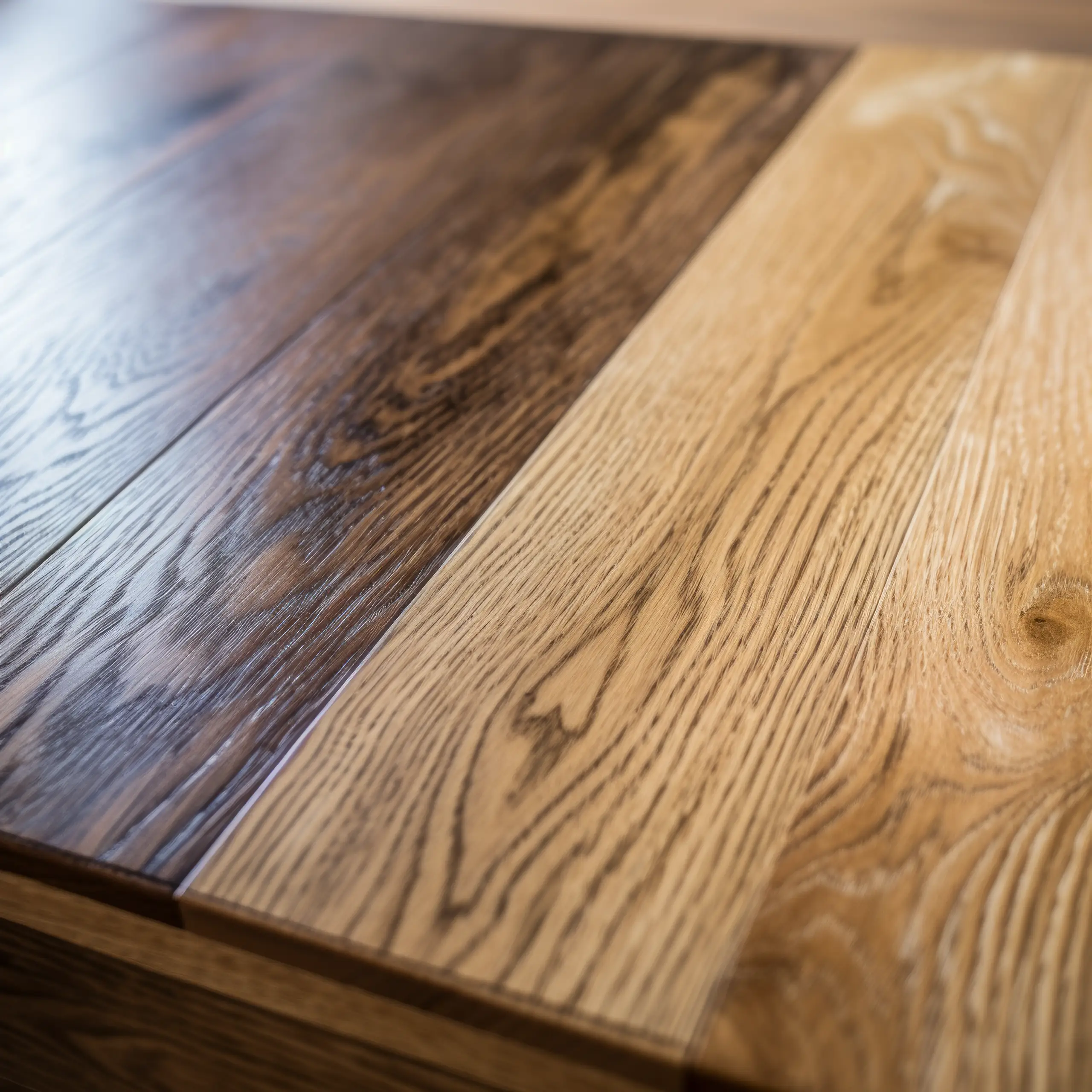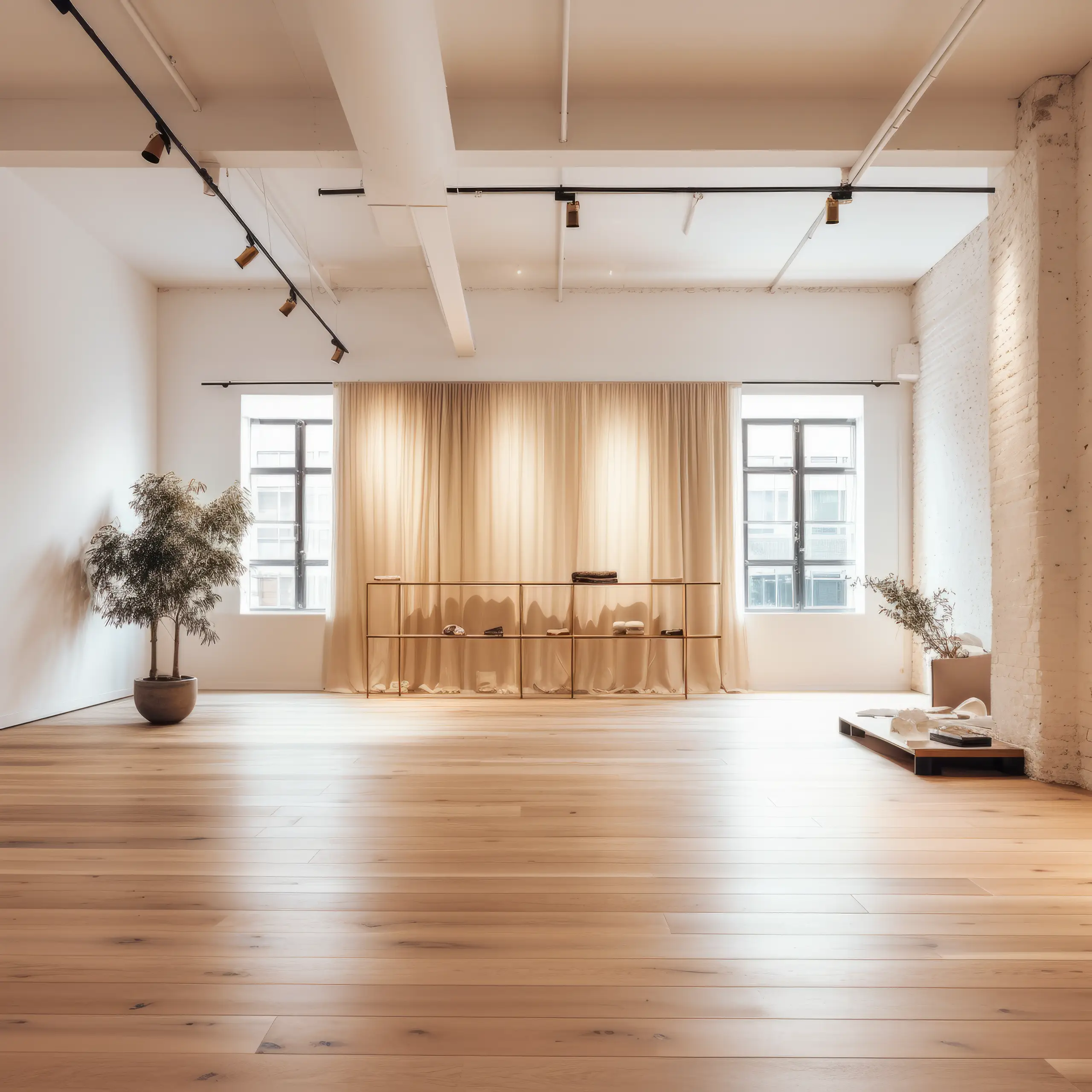For a quicker response, please send all inquiries
via info@canfloor.com or
text to
416-735-0075.
| Monday - Friday | 10:00 am - 7:00 pm |
| Saturday & Sunday | 10:30 am - 4:00 pm |

Hardwood floors can add a touch of elegance and warmth to any home, but with so many options available, choosing the right one can be overwhelming. The perfect hardwood flooring should complement your space, fit within your budget, and stand up to the wear and tear of everyday life. In this blog, we'll guide you through the process of selecting the ideal hardwood flooring for your home. We will cover everything from the importance of choosing the right hardwood flooring to understanding different types of wood, grain patterns, plank width, and eco-friendly options. You will also learn about the financial aspects of installing hardwood floors and what to expect during installation. Lastly, we'll discuss finishing and staining options that contribute to a healthy environment in your home. With our expert guidance, you'll be well on your way to achieving the perfect hardwood floor for your space.
Choosing the right hardwood flooring significantly impacts the ambiance of your space and enhances the value of your home. Quality hardwood floors require minimal maintenance, ensuring long-term durability and adding to the soundproofing of your space. Additionally, hardwood flooring is an excellent choice for radiant heat systems. Installing solid wood or engineered flooring with proper soundproofing mats can make a noticeable difference in your space.
Enhancing your home with solid wood flooring adds a touch of elegance and sophistication. The type of flooring plays a crucial role in defining the overall aesthetics of your space, influencing its perceived value. Selecting unfinished floors offers the flexibility to customize based on personal preferences. Additionally, wider wood planks create an illusion of spaciousness, further elevating the visual appeal of your home.
When considering hardwood flooring, durability is key. Solid wood offers exceptional resistance to everyday wear and tear, while engineered flooring's water resistance makes it perfect for heavy use areas. Prefinished wood with an oil finish requires less installation time, and its natural resistance stands out. Engineered wood, known for high durability, is a popular choice due to its sturdy top layer made of wood planks.
When selecting hardwood flooring, different wood types offer varying grain patterns and colors. The species of wood determine the floor's hardness and durability, while plank width influences its overall look. Choosing the right wood flooring depends on personal preference and style, and understanding the type of flooring is crucial for the installation process.
When considering hardwood flooring options, Brazilian cherry stands out as an exotic wood species known for its rich color. Red oak is a popular choice due to its exceptional durability, while white oak offers a timeless, classic look. Black walnut provides a distinct grain pattern and luxurious appearance, and exotic woods like tigerwood offer unique and striking options. Each type of wood brings a different aesthetic and feel to the space.
Wood species play a significant role in the natural beauty of hardwood flooring, with each type contributing unique grain patterns that add character to the floor. The choice of wood species also determines the level of durability and hardness, influencing the overall ambiance of the space. Exotic wood species, known for their luxurious appearance, bring a sense of elegance to the flooring, offering a high-gloss finish and rich hardwood species.
When selecting hardwood flooring, the grain pattern significantly impacts the overall appearance. Wider planks showcase a natural wood grain pattern, while narrow strips create a traditional look. Parquet squares add visual interest with intricate grain patterns, and engineered wood flooring maintains the natural grain pattern of the wood species. Understanding these aspects will help in choosing the right hardwood flooring for your home.
When selecting hardwood flooring, consider the plank width's direct impact on space aesthetics. Wide planks create a modern, spacious feel in larger rooms, while narrow strips are ideal for smaller spaces. The width choice also influences the floor's ambiance, with wide boards offering a luxurious look. It's essential to choose the ideal plank width to achieve the desired floor appearance.
Hardwood flooring costs vary depending on the wood species used, with solid wood adding a touch of luxury. Opting for DIY installation can reduce overall expenses, while prefinished floors may cost more initially but save on installation time. The type of wood and finish can also impact the price, affecting the overall financial investment in the flooring.
When installing hardwood floors, the square foot cost varies with the wood type. Unfinished flooring may require additional finishing costs, affecting total installation expenses. The type of hardwood flooring, such as engineered or solid, influences overall installation costs. Installation over concrete subfloors might need extra materials, impacting the total installation cost. Additionally, the level of subfloor preparation can also affect hardwood flooring installation costs.
When choosing hardwood flooring, durability and timeless beauty are crucial. It's important to weigh the costs, including installation. Engineered wood flooring offers a cost-effective and durable option. Balancing quality and pricing is essential, along with assessing the longevity of the floors. Soundproofing mats and high gloss finishes are worth considering for a perfect blend of quality and affordability.

When selecting wood flooring, it's essential to consider eco-friendly options that promote responsible forest management and reduce the carbon footprint. Sustainable choices include reclaimed wood for a design that’s conscious of its environmental impact. Bamboo, a rapidly renewable resource, is another popular eco-friendly option, offering both sustainability and durability. Embracing eco-friendly wood flooring contributes to a greener environment while enhancing the aesthetics of your space.
Eco-friendly flooring materials contribute to a healthier indoor environment and support responsible forest management. By choosing sustainable options, the demand for newly harvested wood is reduced, promoting the preservation of natural resources. Additionally, eco-friendly flooring minimizes the environmental impact of home renovations and encourages the use of non-toxic adhesives and finishes, emphasizing sustainability and eco-conscious design.
When considering eco-friendly wood species for your flooring, bamboo stands out with its durability, sustainability, and unique aesthetic appeal. Cork flooring offers natural thermal and acoustic insulation properties, while reclaimed wood adds character and history to your living space. Opt for eucalyptus flooring to support the growth of fast-growing, renewable trees, or choose maple flooring for its durability, versatility, and natural beauty.

Proper preparation of the subfloor is crucial for successful installation of hardwood floors. Acclimating the wood to the room's humidity level is essential in the installation process. Professional installation ensures precise and secure placement of the flooring. The process typically involves securing the wood planks using nails or adhesive, depending on the type of flooring chosen. Understanding these steps contributes to a smooth and efficient project.
Before installation, ensure the subfloor is clean, level, and debris-free. Acclimate the hardwood flooring to the room's temperature and humidity, checking subfloor moisture levels. Essential to plan the layout of wood planks before installing, addressing structural or moisture concerns. It's crucial for successful installation, considering solid wood or engineered floors, ensuring fewer seams and utilizing soundproofing mats for high gloss finishes.
During installation, specialized tools and equipment will be used to ensure precise cutting, fitting, and alignment of the wood planks. The process involves securing the flooring planks to the subfloor and may result in some noise and dust. Clear communication with the installation team is crucial to address any unexpected issues that may arise during this phase
When finishing and staining hardwood floors, it's crucial to understand the impact of volatile organic compounds (VOCs) in finishes. Opting for water-based finishes reduces environmental impact, while staining allows for color customization and enhances the natural wood grain. Different finish options vary in durability and maintenance requirements, adding protection, enhancing appearance, and sealing the wood surface. This ensures a tailored, environmentally friendly solution for your flooring needs.
When choosing finishes, it's essential to consider the impact of volatile organic compounds (VOCs) on indoor air quality and the environment. Opting for low-VOC or zero-VOC finishes can minimize health risks and environmental impact, contributing to healthier indoor air quality and sustainable home improvement practices. Understanding the composition of finishes enables informed eco-friendly choices, supporting the well-being of both the occupants and the environment.
Hardwood flooring positively impacts the environment by improving indoor air quality, promoting sustainable living, and reducing the need for frequent replacements. Additionally, it contributes to the overall environmental impact of residential spaces and adds lasting value and natural beauty to homes.
To summarize, choosing the perfect hardwood flooring requires careful consideration of various factors such as aesthetics, durability, maintenance, wood species, grain pattern, plank width, cost, and eco-friendliness. It is important to strike a balance between quality and affordability while also prioritizing the environmental impact of your choice. Additionally, understanding the installation process and exploring finishing and staining options can help you achieve the desired look for your space. By taking all these factors into account, you can ensure that your hardwood flooring not only enhances the beauty and value of your home but also aligns with your sustainability goals.
